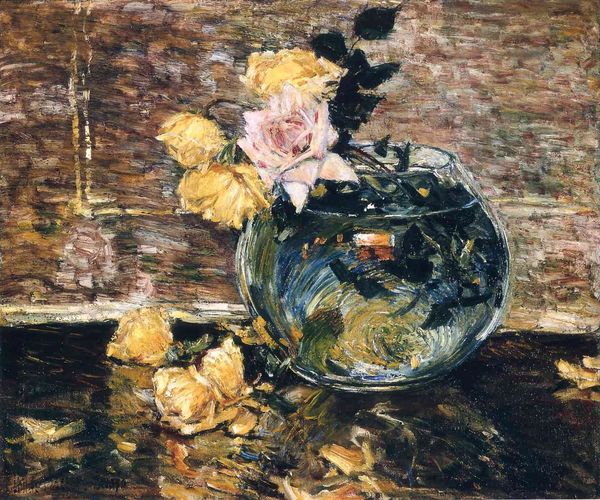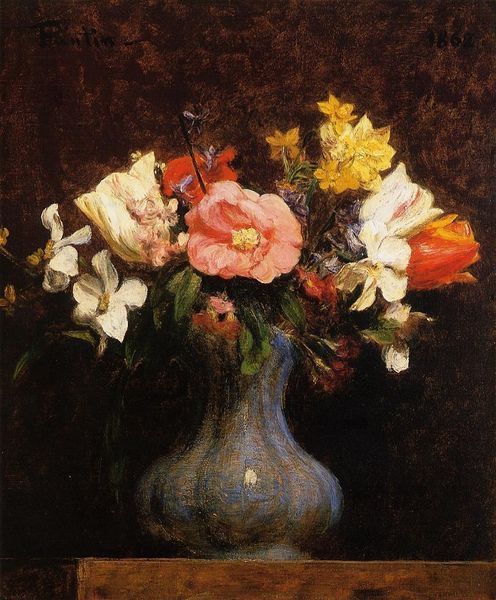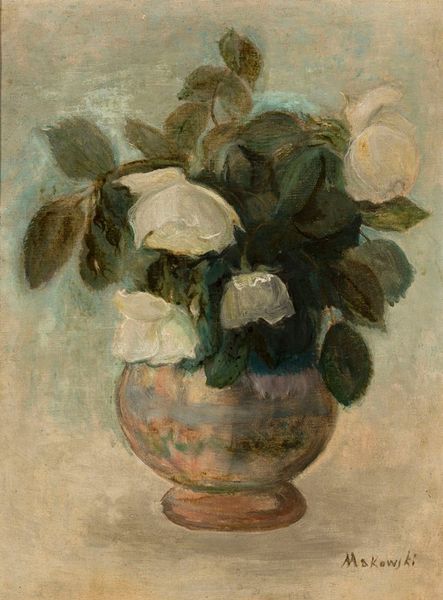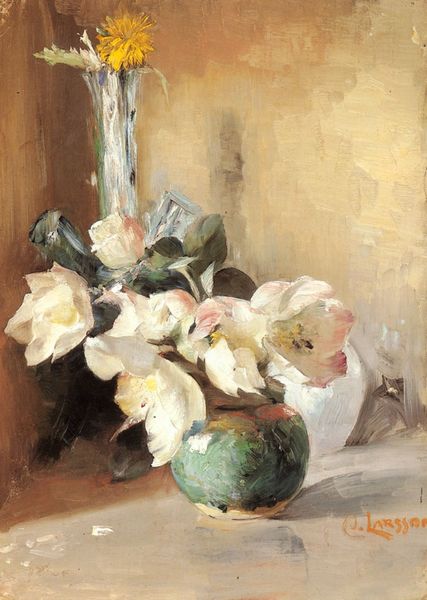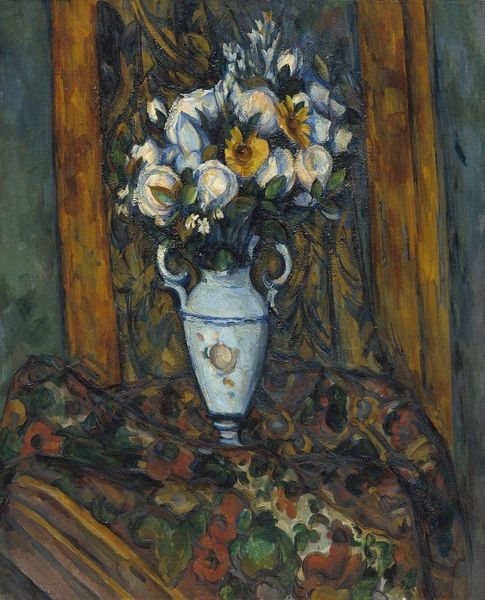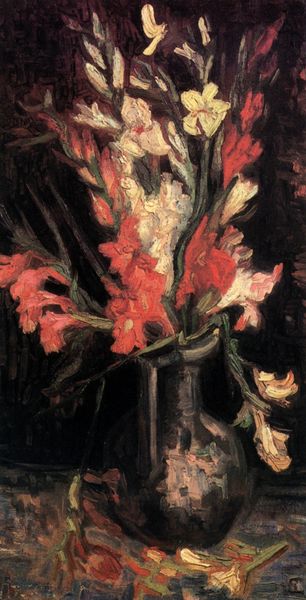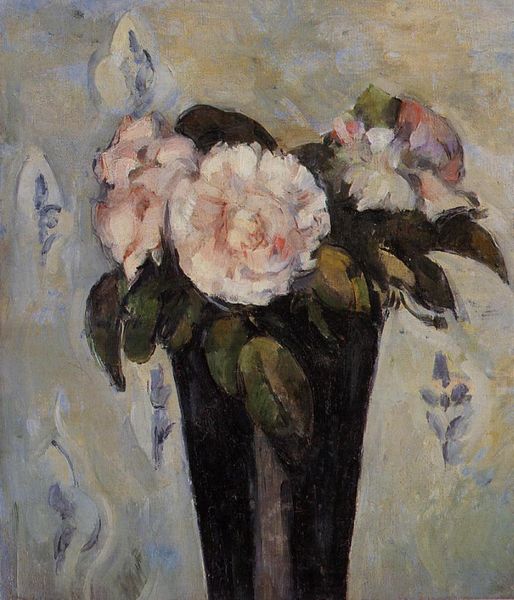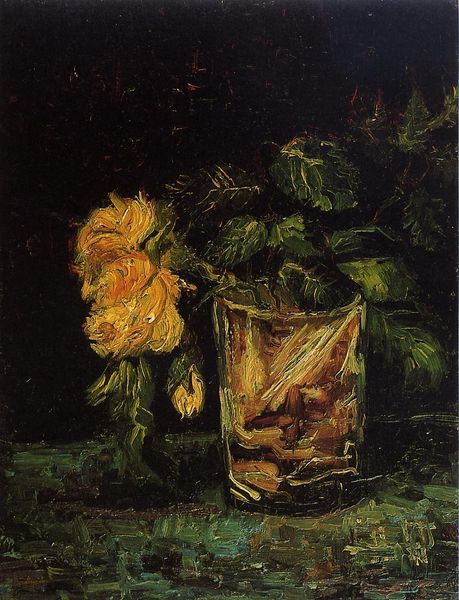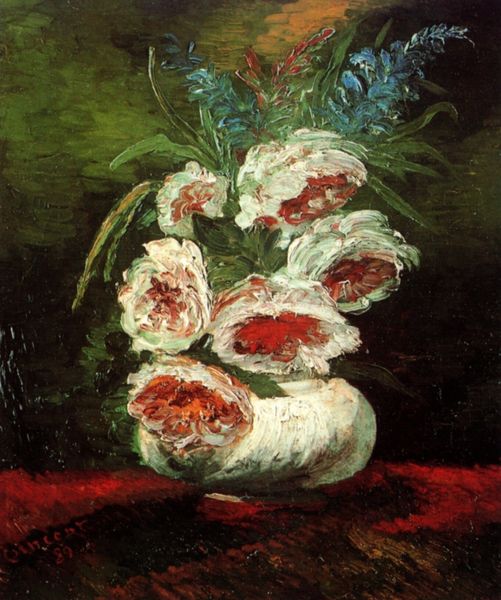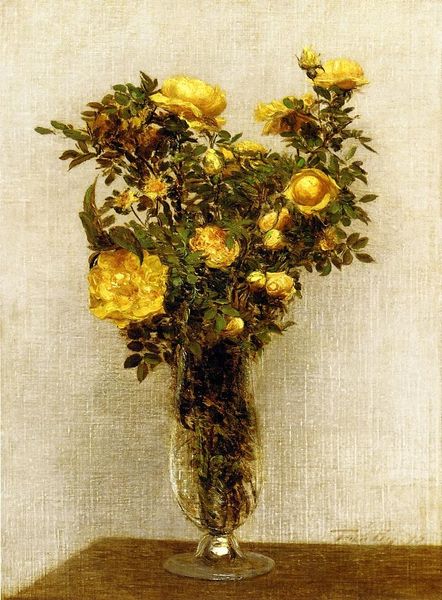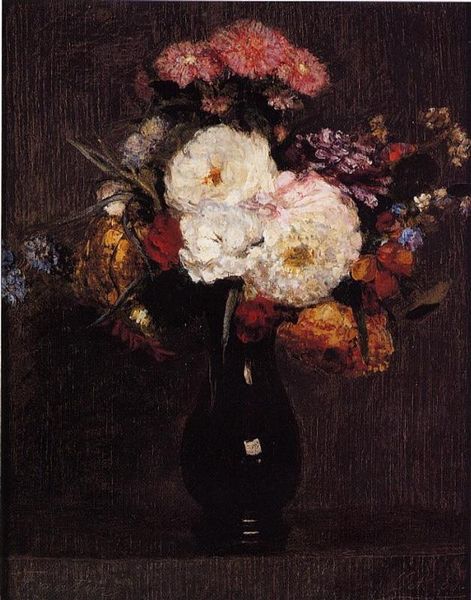
Copyright: Public domain
Curator: This is Childe Hassam's "Giant Magnolias," painted in 1904. It’s an oil on canvas, fairly intimate in scale. What do you think of it? Editor: Mmm, a little gloomy for a floral still life, isn't it? The brushwork is lively, but the color palette feels muted, almost autumnal despite the white magnolias. It evokes a sense of fleeting beauty, like the flowers are already fading. Curator: Hassam was deeply engaged with Impressionism and, later, Post-Impressionism, which might explain this. He’s not aiming for botanical accuracy, but to capture a feeling, a sensory impression of light and shadow. Notice the broken brushstrokes, especially in the background—they almost vibrate. Editor: Yes, there's an energy there. And the vase, a striking blue, becomes this central, almost brooding figure. It's interesting how the Impressionists tackled still life. Monet’s gladioli sing with joy, while Hassam presents a quieter, perhaps more introspective beauty. How does this fit into the wider cultural scene at the time? Curator: Turn-of-the-century America was experiencing rapid industrialization and social change. Art became a means of reflecting—and sometimes escaping—that reality. Hassam, though often painting urban scenes, seems to be searching for moments of serenity, finding them in the natural world. The magnolias themselves symbolize dignity and nobility; perhaps he’s offering us a symbol of hope amidst the chaos of modern life. Editor: That makes sense. It reframes my initial impression. The perceived gloom transforms into a dignified quiet, almost stoic, reflecting the cultural shifts of the era. Curator: It’s also fascinating how these images shape our own cultural perceptions, even today. This canvas feels more contemporary than you'd expect given its date. The themes of nature and urban anxieties continue to resonate. Editor: Indeed. It speaks to how a seemingly simple still life can contain so much more, both about its own time and for us today. The quiet contemplation this elicits makes me see more than just flowers. Curator: Well said. It reminds me that stillness in art can sometimes speak the loudest.
Comments
No comments
Be the first to comment and join the conversation on the ultimate creative platform.
